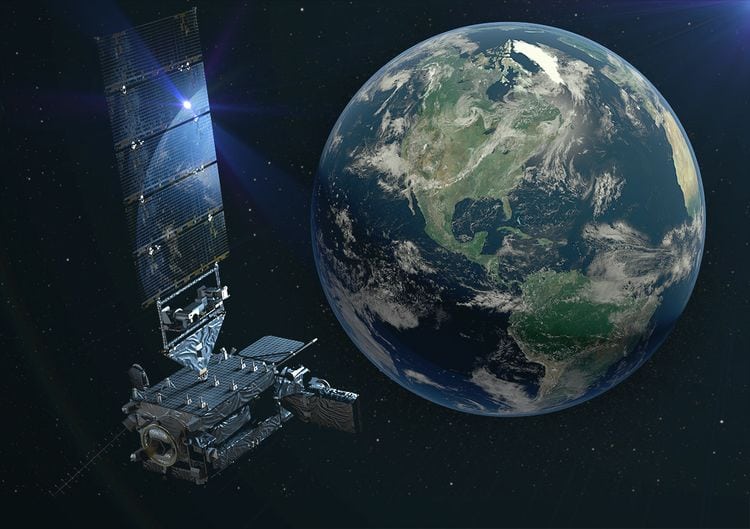Latest News

Artist’s rendering of a GOES-17 satellite in space. Photo: Lockheed Martin
The National Oceanic and Atmospheric Administration (NOAA) awarded Harris a three-year, $284 million sole-source extension on the ground segment contract supporting Geostationary Operational Environmental Satellite (GOES) -R Series weather satellites — aiming to bring new technologies that support increased capabilities. The three-year contract extension aims to modernize the ground-computing infrastructure and reduce the IT footprint, laying the foundation for future migration to cloud technologies. It extends the partnership with NOAA’s National Environmental Satellite, Data, and Information Service (NESDIS) to 13 years – and brings the total contract value to $1.65 billion.
The GOES-R ground segment controls and commands NOAA’s two new Geostationary Orbit (GEO) weather satellites, GOES-16 (East) and GOES-17 (West), and will control GOES-T and GOES-U satellites after their launches. The ground segment controls the Harris-built main payload, the Advanced Baseline Imager, and other onboard instruments.
It also collects and processes 3.5 terabytes of science data every day that is used for severe weather warnings, real-time fire detection,- and other life-saving information used by the U.S. National Weather Service and more than 10,000 direct users worldwide. Weather data and products are generated in less than 30 seconds, and space weather products in 1.8 seconds.The first and second satellites in the GOES-R Series launched in 2016 and 2018, and both are operational.
Get the latest Via Satellite news!
Subscribe Now